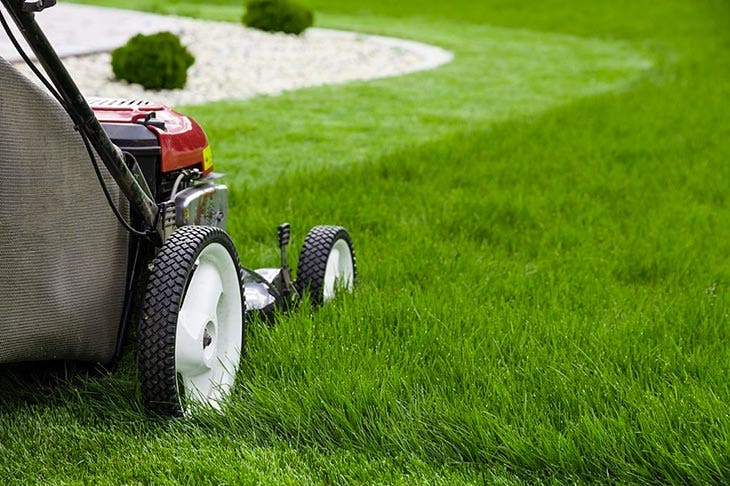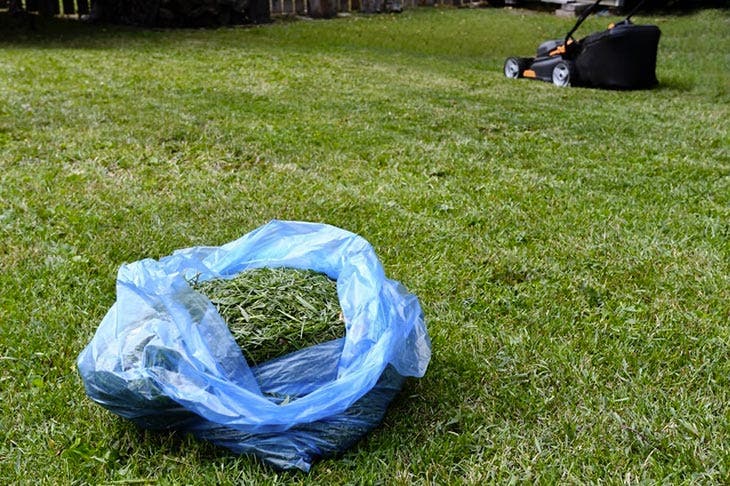The garden lawn needs regular care and maintenance. To do this, it must be mown as soon as necessary. After each mowing, avoid leaving the pile of cut grass piled up jumbled or piled up in a corner. Far from being useless waste, grass clippings can be recycled and benefit the garden. That said, instead of throwing them away, find out how you can recycle them.
Grass clippings are green waste rich in organic matter. Instead of leaving them in a corner, consider recycling them. Moreover, when piled up, lawn clippings risk decomposing badly due to humidity, and consequently giving off bad odors. Also, mold and waterproof patches can form on the pile, and make the clippings unusable.
How to recycle grass clippings and use them in the garden?

When you mow your lawn, do not throw away this pile of grass clippings. It has unsuspected uses in the garden.
- Grass clippings to balance the compost
Compost is a fertilizer composed of mineral matter and organic matter. For your compost to be balanced, it must be enriched with organic carbon materials, but also nitrogenous ones. Grass clippings are part of nitrogenous organic matter. Add them to your compost pile and stir to mix all the waste that makes it up. Note that lawn clippings are rich in nitrogen. Therefore, avoid loading your compost pile with other nitrogenous materials.
To be sure to balance your compost, and have a good mix of carbon and nitrogen, simultaneously mix a volume of green waste with a volume of brown waste, such as paper, cardboard, or dead leaves. This way you limit the risk of rot, especially since the grass clippings are damp.

- Grass clippings to make mulch
Grass clippings are rich in nitrogen, and can therefore serve as mulch for the soil, especially since grass allows the development of microorganisms essential for structuring the soil. This mulch can be used in 2 different ways. For plants with a short growing cycle, only place a thin layer of grass clippings at the base of your plants. Note that the vegetative cycle refers to the period between seed germination and plant maturity. In other words, it is the period of development of a plant. For plants with a long growing cycle, such as tomatoes, cucumbers or squash, place a large layer at their base, between 2 and up to 5 cm thick, and renew the mulch as soon as it sags. The latter helps maintain soil moisture and prevents the appearance of weeds. Thanks to the microfauna they contain, grass clippings can decompose in just a few weeks and therefore enrich the soil with organic matter.
To make a good mulch, first spread the lawn clippings on a tarpaulin that you will keep in the sun. This will remove excess moisture to prevent the appearance of rot, which could affect the proper growth of plants.
- Grass clippings for mulching

Mulching is a technique which consists of mowing the lawn, without collecting the grass. This technique requires a special mower, equipped with the mulching function, to cut the grass very finely. This constitutes a protective layer which acts as mulch and thus helps retain soil moisture. Its decomposition also helps nourish the soil, because the grass turns into a natural fertilizer rich in nitrogen, effective in fertilizing the lawn.
Grass clippings remain beneficial for your garden. This pile of cut grass can be used in compost to balance it, or used as mulch to protect the soil and retain moisture.



